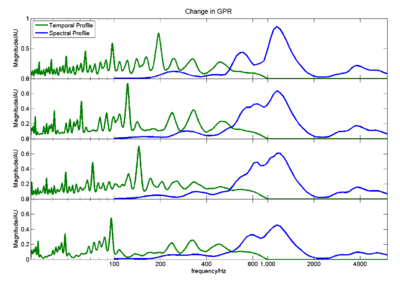
In music, timbre (/ˈtæmbər/ TAM-bər (American English), /ˈtæɪmbər/ TAIM-bər (British English), or /ˈtɪmbər/) also known as tone color or tone quality from psychoacoustics, is the quality of a musical note or sound or tone that distinguishes different types of sound production, such as voices and musical instruments, string instruments, wind instruments, and percussion instruments. The physical characteristics of sound that determine the perception of timbre include spectrum and envelope.
In simple terms, timbre is what makes a particular musical sound different from another, even when they have the same pitch and loudness. For instance, it is the difference between a guitar and a piano playing the same note at the same loudness. Experienced musicians are able to distinguish between different instruments based on their varied timbres, even if those instruments are playing notes at the same pitch and loudness.
Tone quality and color are synonyms for timbre, as well as the "texture attributed to a single instrument". Hermann von Helmholtz used the German Klangfarbe (tone color), and John Tyndall proposed an English translation, clangtint. But both terms were disapproved of by Alexander Ellis, who also discredits register and color for their pre-existing English meanings (Erickson 1975, 7).
The sound of a musical instrument may be described with such words as bright, dark, warm, harsh, and other terms. There are also colors of noise, such as pink and white.
In visual representations of sound, timbre corresponds to the shape of the image (Abbado 1988, 3).
No comments:
Post a Comment